Hybridisation is part of the nervous system, getting under the skin of human beings, and it is a challenge that people willingly accept. We are in Trieste, the European Capital of Science 2020, at the hydrodynamic plant located in the Old Port. On Saturday, 17 November, the first edition of Robotics, Festival of Art and Robotics (Digital Nature) was launched with an exhibition curated by Maria Campitelli and Valentino Catricalà.
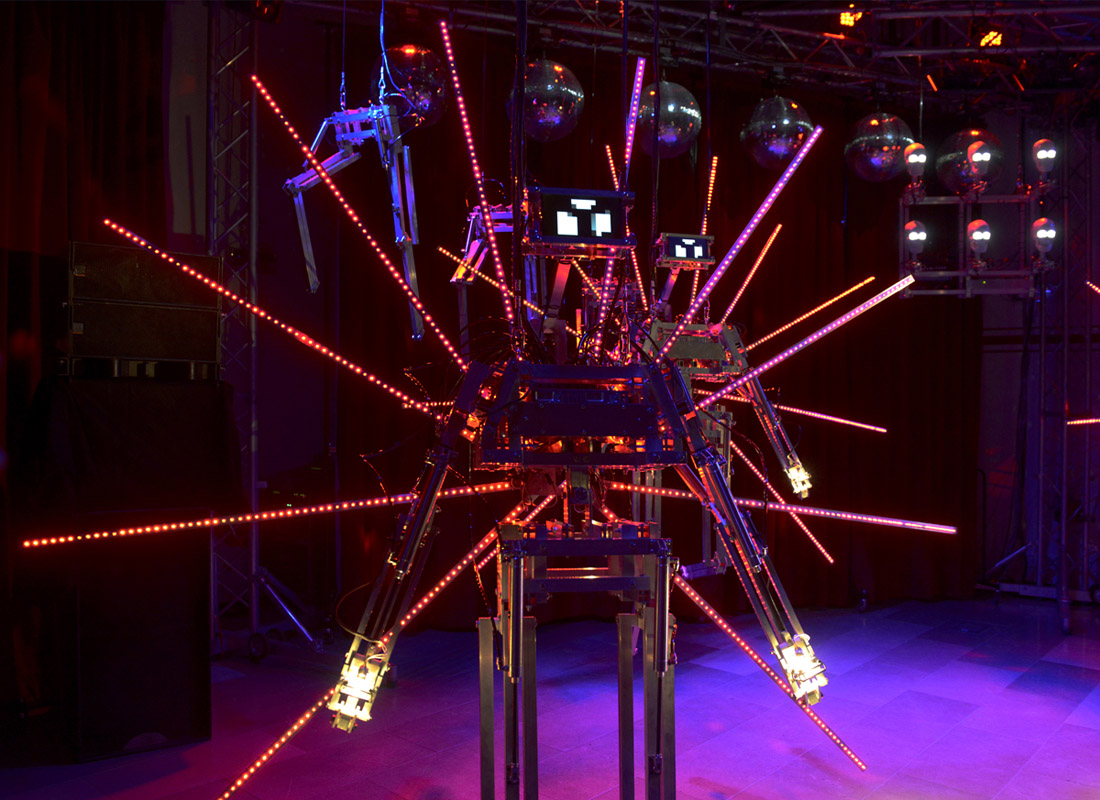
This event features over forty artists, with a programme that lasts until 28 November with lectures, laboratories and performances in which many internationally renowned artists are participating: from Patrick Tresset and his robot-designer to Cirkulacija 2, from Ken Rinaldo to France Cadet, from Luigi Pagliarini to Alessandro Sciaraffa, from Donato Piccolo to Ken Rinaldo, from Nadja Moncheri to Christian Fogarolli, and many others. Alongside these names, some artists from Gruppo78 can be found, presenting media-art works.
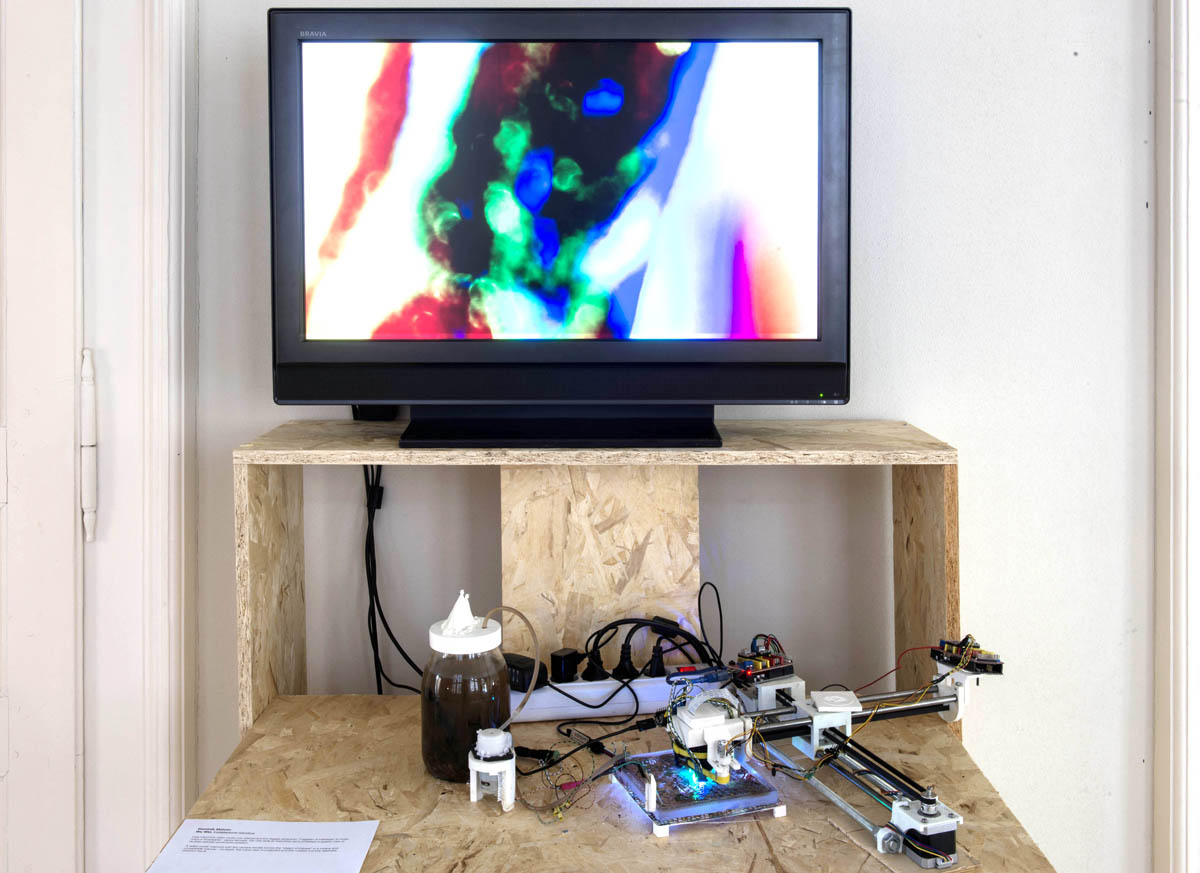
These include Cecilia Donaggio Luzzatto Fegiz, Guillermo Giampietro, Elisa Zurlo, Lucia Flego, Fabiola Faidiga, Lucio Perini, Paola Pisani, Luigi Tolotti and Max Jurcev. Art and science are undoubtedly two concepts in constant flux and this event focuses on the increasingly interconnected development of these two worlds. The project, curated by Gruppo78, represents an observatory, recording what happens in the world of science, technology and art from the perspective of continuous shared innovation and the challenge of a post-human future. Nature and living beings have always inspired human imagination. From the beginning, humanity has attempted to represent and recreate nature through the first images, instruments, devices, architecture, materials and machines, finally leading to Robotics, Artificial Intelligence and their hybrids. The Festival opened with an inaugural address by the founder of Noema and art*science Professor Pier Luigi Capucci, who reflected on the evolution of robots and “Third Life”: in other words, the life of entities and organisms created by human culture – the “First Life” being biological life and “Second Life”, life in its symbolic dimension.
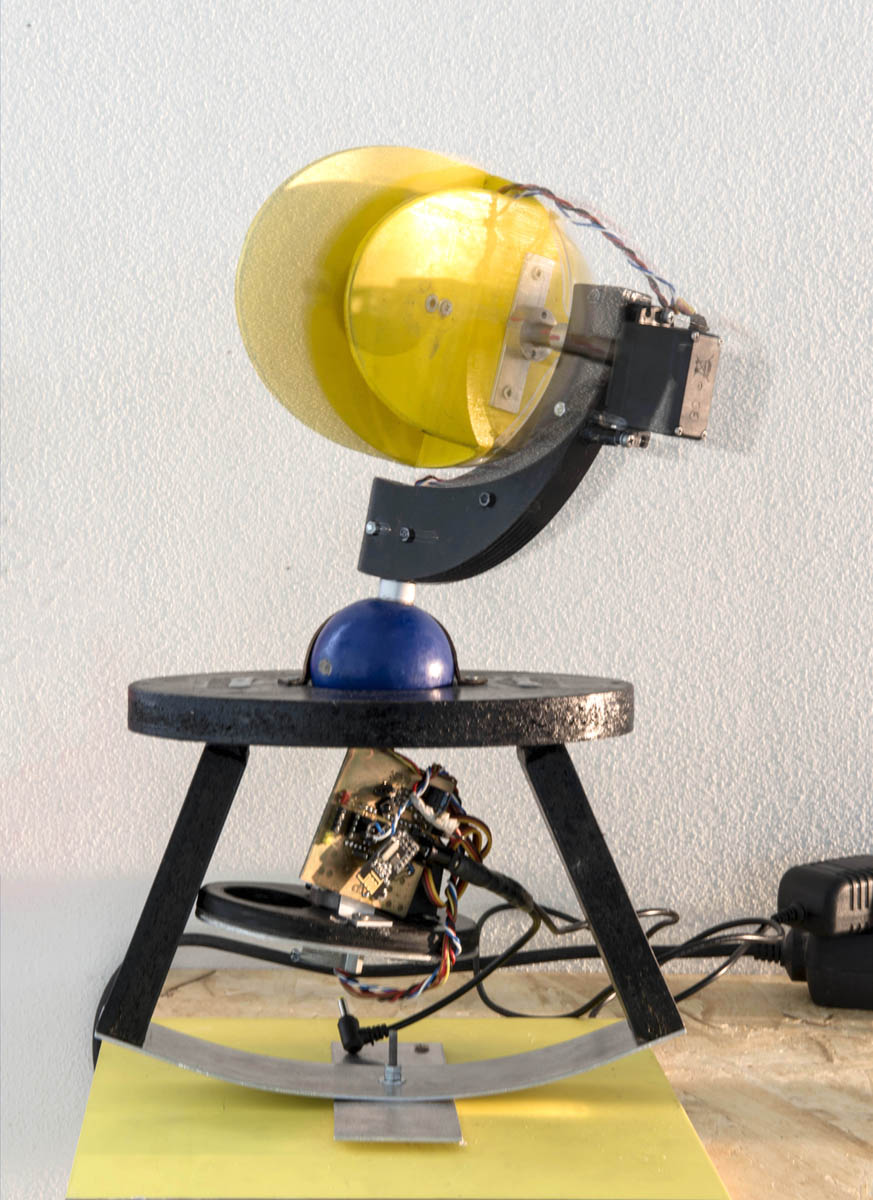
So, the medium is no longer the message, as Canadian theorist Marshal McLuhan stated, but life itself, as maintained by Mario Savini in his latest essay. Following Capucci’s lecture, the world premiere of Bill Vorn’s performance Copacabana Machine Sex, with Philippe Battikha, was presented. This is a performance project in which the Canadian artist draws inspiration from “Robotic Opera” by Chico Mc Murtrie (1992). The audience watches a kind of “mechanical burlesque” show where ten dancing robots weave lights and synchronised movements together. As soon as visitors enter this wonderful and recently restored hydrodynamic plant – a complex of architecture and machines – two hanging masks catch the eye, created by artist and neuro-psychologist Luigi Pagliarini. One mask belongs to the complex work Fatherboard of 2007 and the later creation to the work in progress Pixel-being, consisting of wood, solar panels and circuits – an eco-systemic reflection on cyborg technology. Human life is increasingly dependent on electronics, leading to a change in its characteristics and in the use of short- and long-term memory.
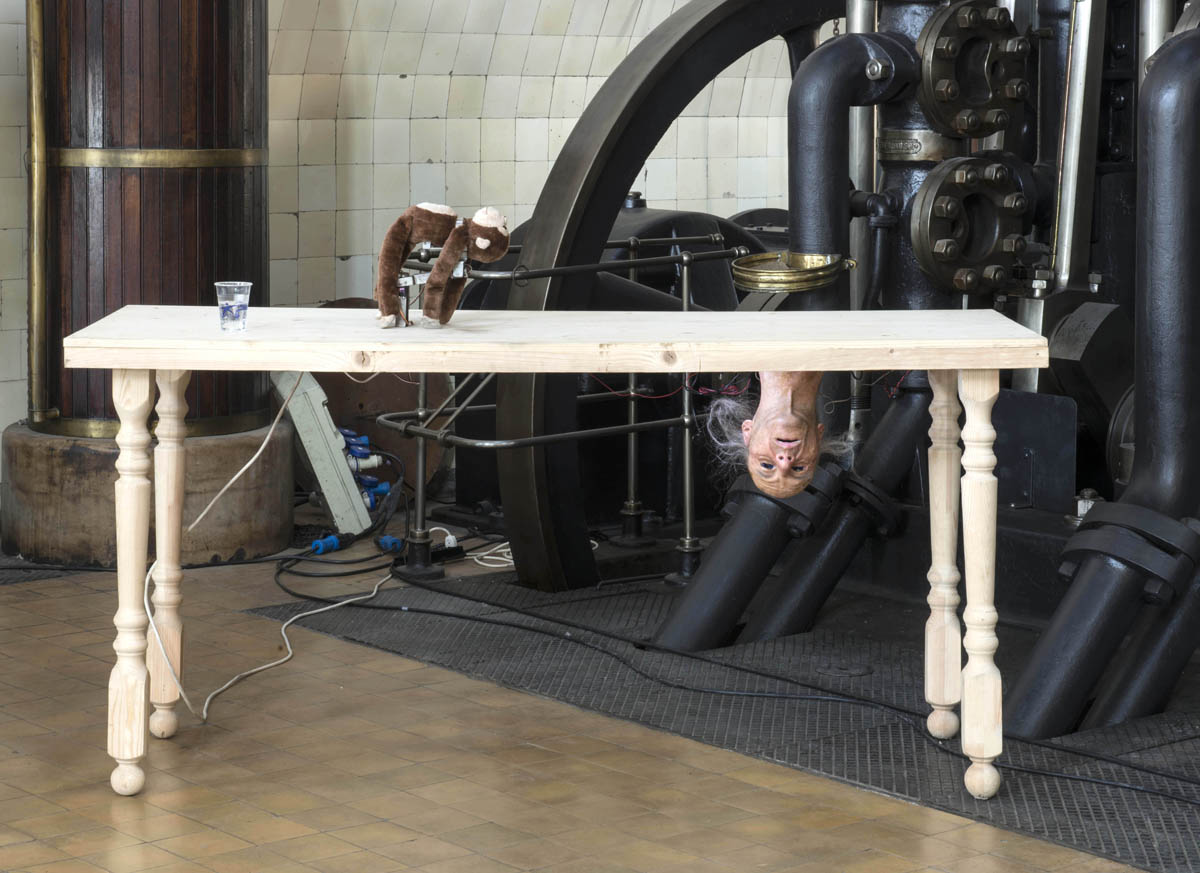
An important exchange between man and machine is thereby created where, on the one hand, machines are left to imitate biological intelligence while, on the other, some of their behaviour is enacted by man in an infinite recurring process, in which teaching and learning operate simultaneously. With Robotics, the Festival of Art and Robotics (Digital Nature), the city of Trieste becomes the main centre of robotics and art, an intimate connection that forces us to radically change our perspective on the contemporary and the human, to observe a continuous hybridisation of biological life, non-life, third life – an altered inorganic and artificial life, tending towards a new rich form of tension and virtuality.
The body thus becomes a place for hybridisation and transformation. The artists force us to reconsider what being a human signifies. It is a shared work involving the artist, the technician, the robot, all of us, immersed in a constant state of change. Thus the robots become co-authors. So who decides? The artist, the engineer, the spectator or all of these together? Should we fear robots? Artists? Robot-artists? It is a hybrid process which reveals and uncovers the connection between the natural and the artificial, two “categories” constantly being redefined. It is also the admission, or rather the acceptance, that the body is neither entirely natural nor cultural, but something infinitely plural, contaminated and an expression as well as place of signification.
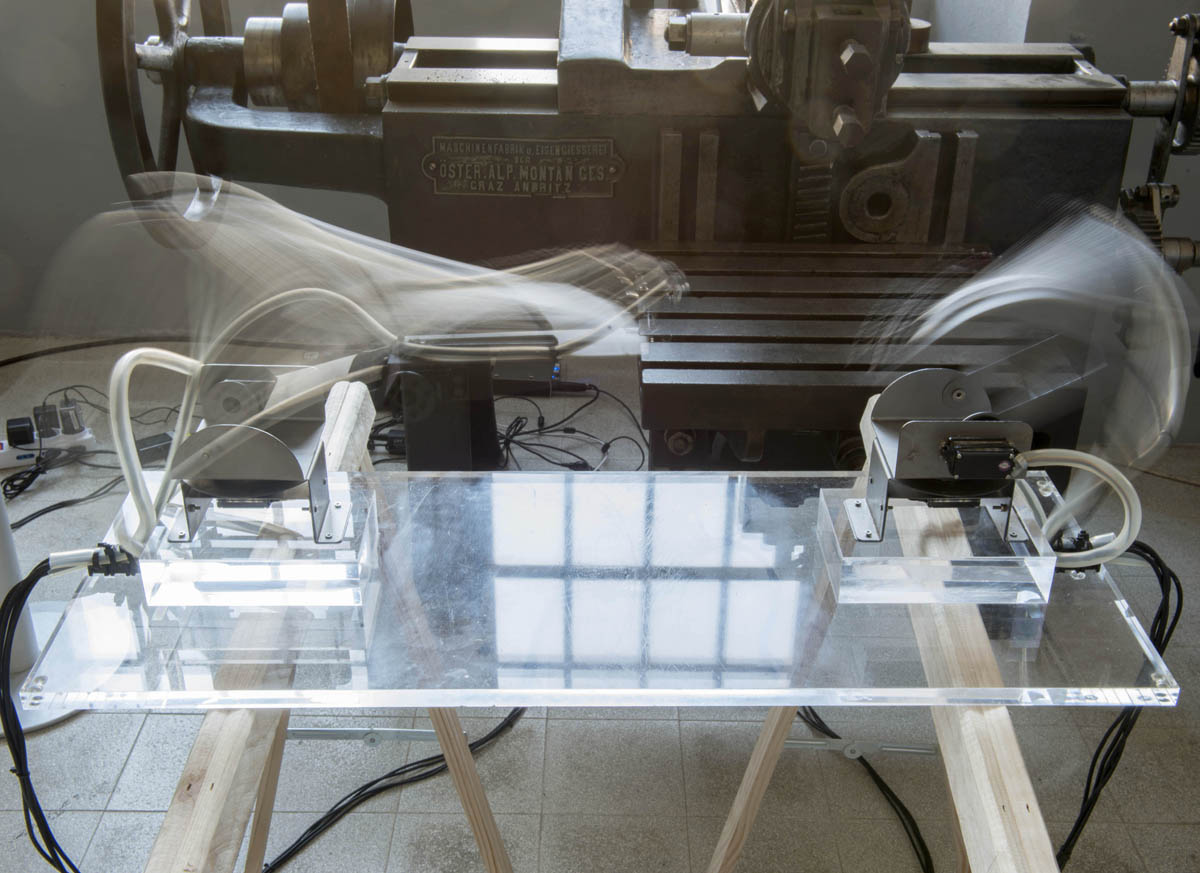
Art does not have a “salvific” function, rather it interprets the present to imagine the future. Art is not technological, but takes on technology, using its devices within a wide and complex project in order not to forget the future where human beings recover their level of humanity, either superhuman or inhuman, but decide to collaborate in a plural, hybrid existence – still human. A mutating variety of existence.
ROBOTICS Festival di Arte e Robotica, curated by Maria Campitelli/GRUPPO78, and Valentino Catricalà, 17 – 28, 2018
images: (cover 1) France Cadet at the ROBOTICS. Festival di Arte e Robotica, Trieste, Italy, 17-28.11.2018 (2) Bill Vorn at ROBOTICS – Festival di Arte e Robotica, Trieste 17-28.11.2018 (3 – 4) Cirkulacija at ROBOTICS – Festival di Arte e Robotica, Trieste 17-28.11.2018 (5) Donato Piccolo, ROBOTICS – Festival di Arte e Robotica, Trieste 17-28.11.2018 (6) Roberto Pugliese at ROBOTICS – Festival di Arte e Robotica, Trieste 17-28.11.2018










































